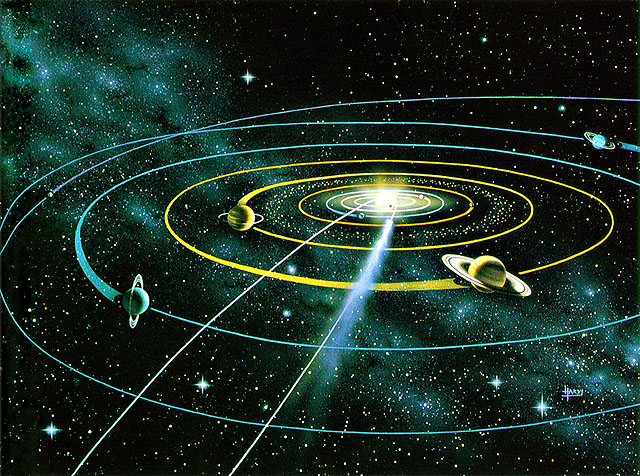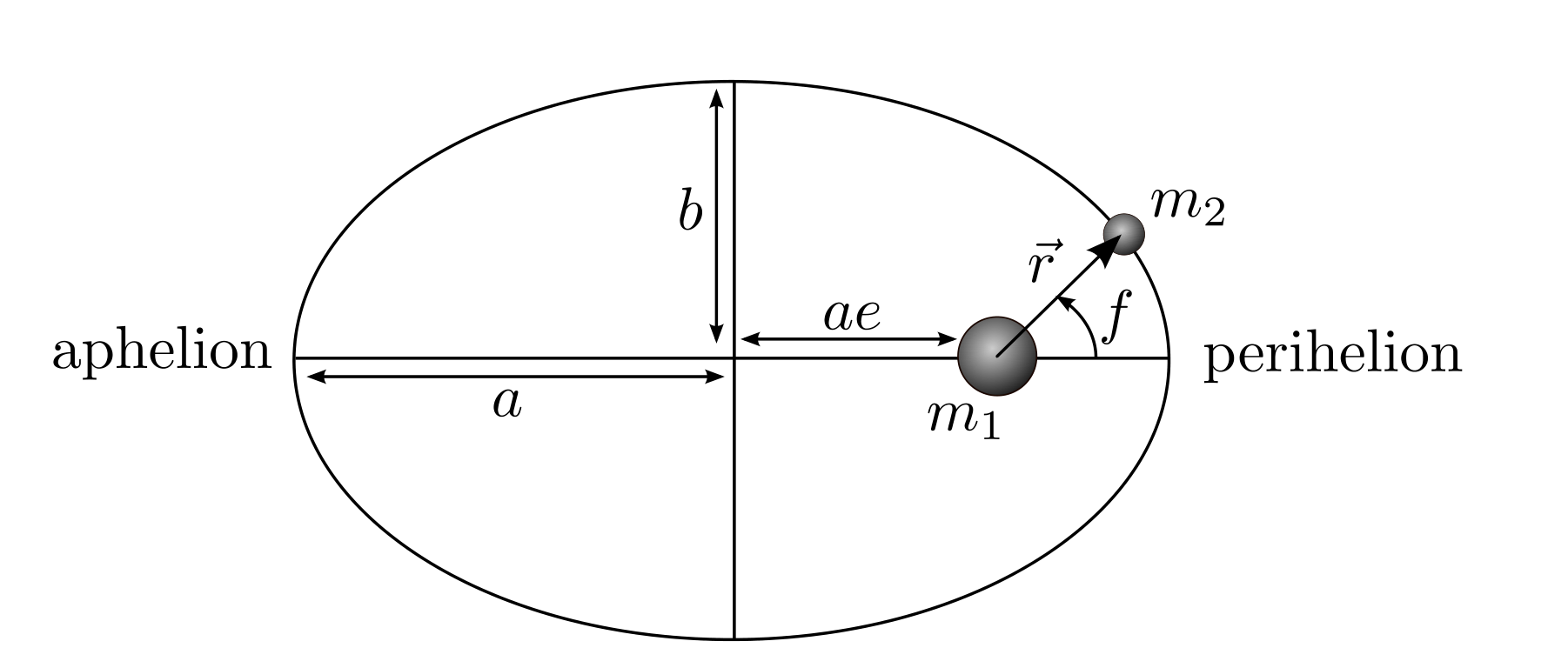
I mentioned ellipses last blog but I did not elaborate much, let's get into some details. Being a simple human you might think that ellipses resemble the ovum of Gallus gallus domesticus, but that would be incorrect as eggs are oval, neither elliptical nor circular, simple human.

Do not be startled child, this is not as complicated as it looks. Let's go through these variables together:
- \(m_1\) is just the star or the massive object
- \(m_2\) is just the planet or the very small object
- a is the semimajor axis
- b is the semiminor axis
- f is an angle, the true anomaly defined as \(f = \theta - \omega\), where \(\omega\) is a constant (initial orbit angle).
- e is the eccentricity defined as \(\sqrt{1-(\frac{b}{a})^2}\)
- Perihelion is the point closest to the star
- Aphelion is the point farthest away from the star
- \(\vec{r}\) is the position vector
Now lucky me (and you) my master Alfrodius Hafnsen has left us a gift found here: An analytical general solution to the two body problem, with how it was derived, step by step, the usual excellence of Sir Alfrodius. The expression is very simple and elegant and tells us where the planet is from the frame of reference of the sun. Here goes:
The beautiful expression is given by:
\( r = \dfrac{a(1-e^2)}{1+e \cos f} \)
Isn't that mind boggling? How simple and elegant physics and mathematics can be. Taking a closer look at this formula, we see that a, e are just constants (if they weren't we would not have an ellipse. But f? it is the only one changing throughout the orbit, so in essence, the position is nothing but a function of true anomaly.
This is the analytical solution, and last scroll the numerical solution was described, what are the differences between them? Which one would you trust more? If your answer was the analytical solution you got it right, what we will do is calculate the numerical orbit and then compare it to the analytical orbit as a sort of test. Did I manage it? You'll find out in the next scroll. Teaser: I'm not perfect ..